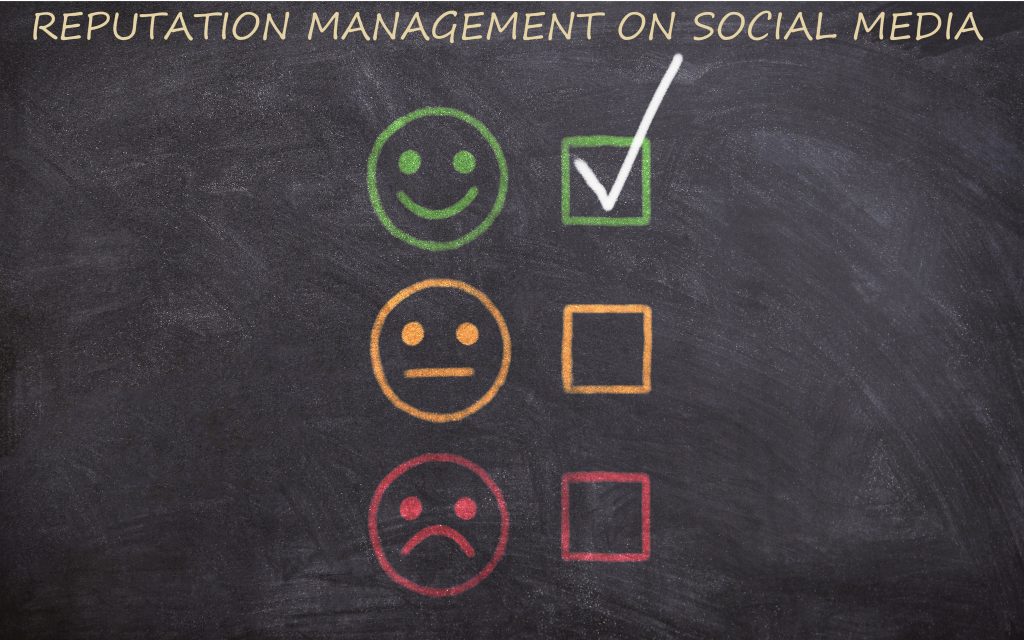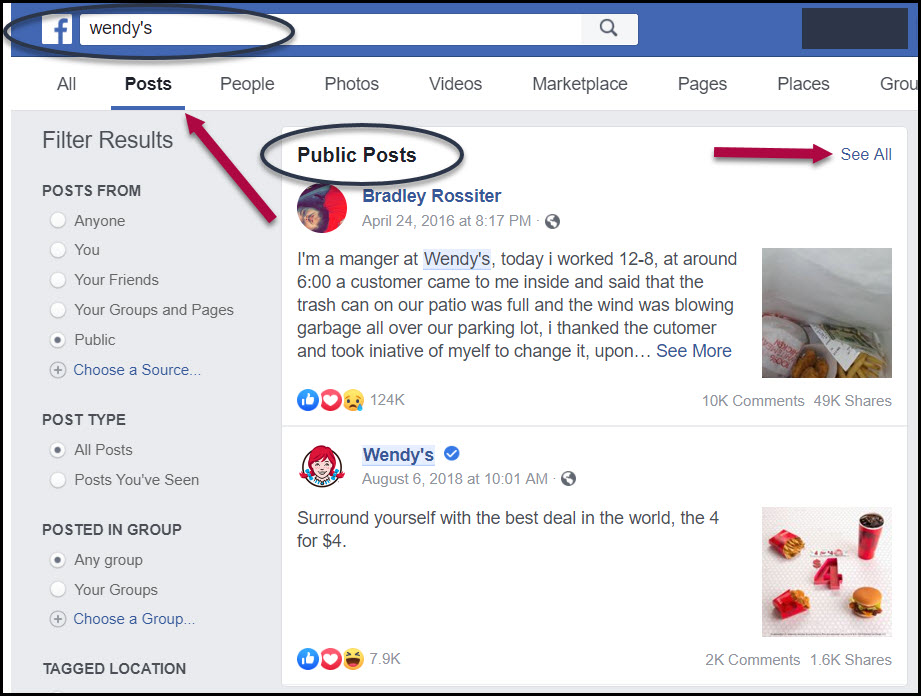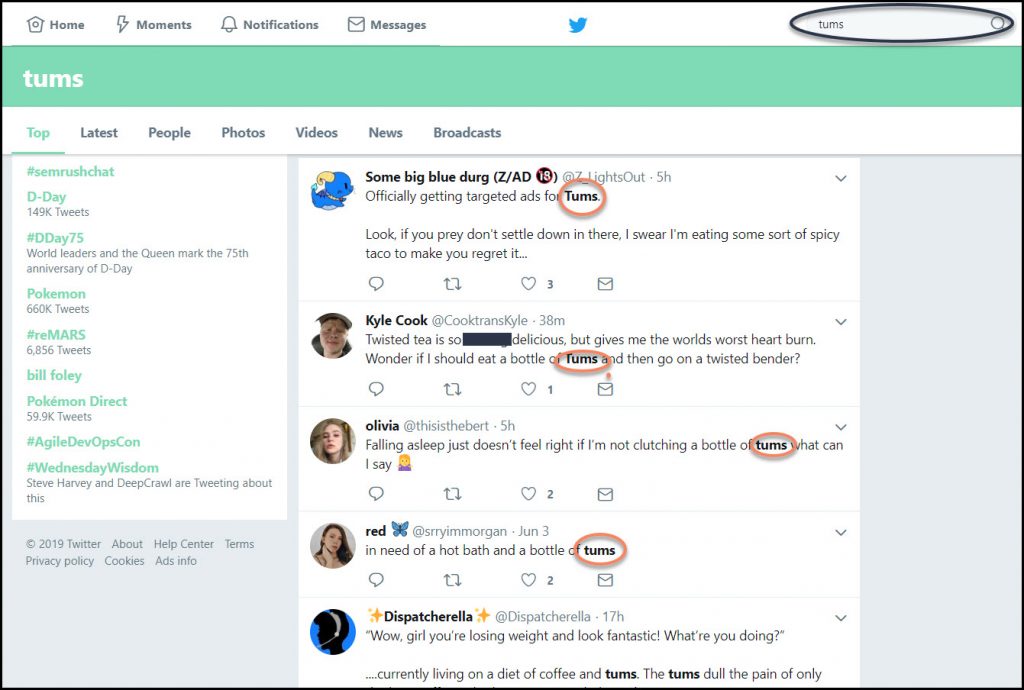
In Part 1 of the Online Reputation Management Strategies You Can Implement Today series, we explored ways to manage brand reputation on Google Business Profile and other local review sites.
But as we know, your online footprint isn’t limited to your website and the search engines. Let’s dig into some of the most widely used websites1 after Google – social media!
Part 2: Reputation Management on Social Media
First, let’s review some basics for managing your brand on various social media platforms.
Step 1: Find Out Which Social Media Platforms Your Customers Are Using
An online retailer of high fashion clothing and accessories for tweens is going to have a completely different social media footprint than a financial advisor.
Likewise, the social media following of a manufacturer of packaging materials will be vastly different from the following of the snack food distribution company who is purchasing those packaging materials.
Your business has already determined who uses your products and services. Identify your target market and find out what social media platforms they’re using. How can you do this?
- Find a few experts or gurus in your industry, and look at what social media platforms they are using. Which ones generate the most engagement? (Likes, shares, comments, etc.)
- Look at which platforms are best for each demographic. Dive into your Google Analytics reports to see if your users are visiting your website on a desktop or mobile device. Find out what income bracket they fall into. Use these identifiers and review these articles that dive into which platforms are best for each demographic:
- Outbound.net Social Networks Demographics Breakdown
- Spredfast 2018 Social Audience Guide – Be sure to scroll all the way to the bottom for this one for a convenient chart on which platforms are best for specific industries.
- Look at your existing social media profiles. Which ones have the most page likes? Which one has the most engaged audience?
Completing this step will guide you in deciding where you want to focus most of your time. While you don’t want to ignore any areas your business has a following, dedicating more time to the high traffic areas allows you to connect with a large number of customers and potential customers more efficiently.
Step 2: Engage With Your Audience
I know you’re already struggling with the idea of even posting regularly on your social media platforms. And now I am asking you to go one step further by engaging with your audience after the post has been posted.
But trust me, this is the most valuable step. Because while posting will help with brand awareness and establishing trust as an industry leader, engaging with the people who respond is going to make a lasting impact on their impression of your brand.
Here are some key points to keep in mind when engaging with your audience:
- Choose a persona for your brand’s social media accounts, and try to stick with that persona when engaging with your audience. Think about your existing marketing material — website, brochures, even face-to-face communication — your persona shouldn’t differ much from how you are already interacting with customers.
- With each engagement with a customer, go through a quick checklist:
- Does it fit my brand’s persona?
- Is it intended to be a positive interaction?
- Would I appreciate this response as a customer?
If you answer no to any of these questions, it’s probably best not to engage!
- Identify processes for handling various levels of negative engagement. This step is critical because it leaves no room for impulsive or emotional reactions to feedback or engagement that can often be quite triggering. It also ensures that your social media accounts can be maintained by anyone in your organization without fear of an accidental viral-in-a-bad-way incident. Examples might be:
- Victimless negative feedback — respond with polite concern and opportunity for improvement
- Negative feedback that contains vulgar/inappropriate language — delete comment
- Negative back-and-forth between followers that’s unrelated to business — ignore
Step 3: Monitor Brand Mentions
Don’t forget that many mentions of your brand can happen without you even realizing it. While some customers will post feedback directly to your Facebook page or will tag your brand on Twitter, others are talking to their own audiences and not necessarily trying to reach your business.
Again, this is where a process is important to monitor your brand’s mentions and ensure you are reaching your vocal customer base.
Here is how to run basic searches on your brand name, product names, etc. on Facebook and Twitter


Step 4: Create a Process—And Stick With It
Finally, doing all of these things are great — but we all know it’s easy to get started, and not so easy to keep the momentum going. This is where having a social media process is key. Here are some key steps to assembling a social media management process that works for you:
- Key Players – Based on the size of your organization and the level at which you want to tackle your social media strategy, you’ll need to assign anywhere from one person for everything, to multiple people per platform, to manage your social media accounts.
- Time – You’ll also need to budget your time. 1 hour a week? 2 hours a day? Decide how much time you can afford to dedicate, keeping in mind that this is an investment in your customer base.
- Platforms – You’ve already decided which social media platforms to focus your energy on in step 1. Now, designate your key players and time into each of these platforms.
- Schedule – Divide up your time and key players into a schedule that works for you. This may be divided into a daily, weekly, or even monthly schedule depending on the amount of time you are budgeting for social media management.
- Stick With It – Social media is an ongoing effort. This entire process is not worth the investment if you’re going to keep it up for a month and then stop. Write it down. Put it in a living document on Google Drive. Set calendar reminders. Do whatever you need to do to stick with it! Below is an example social media calendar, which you can download here.

A note on tools.
There are a plethora of social media management tools out there to set up scheduled posts, track engagement, monitor analytics, etc. This can either make your job much easier (typically with a larger company and fan base), or over-complicate things.
If you think a tool may be right for you, be sure to try a free tool first like Buffer, Crowdfire or SumAll, or start out with a demo or free trial for a more elaborate platform like Hootsuite, SproutSocial, or Loomly.
You Can Do This!
Starting something new can always be a challenge — especially if it may be something that you don’t personally relate to or use. But you’ve done the research, and this is where your target market is. You need to be there with them! So decide on your platforms and process, create a simple calendar, and get engaging!
1At the time of writing this article, YouTube ranks #2, Facebook #3, Twitter #11, Instagram #13, Linked In #25 Source: https://www.alexa.com/topsitesAbout the Author

Nicole Vesota
Vice President & Project ManagerNicole has been working in online marketing since 2007 when she joined Top Of The List. She loves creative endeavors and spending time with her daughter.




